Guangmin Hu
Unsupervised Seismic Footprint Removal With Physical Prior Augmented Deep Autoencoder
Feb 08, 2023Abstract:Seismic acquisition footprints appear as stably faint and dim structures and emerge fully spatially coherent, causing inevitable damage to useful signals during the suppression process. Various footprint removal methods, including filtering and sparse representation (SR), have been reported to attain promising results for surmounting this challenge. However, these methods, e.g., SR, rely solely on the handcrafted image priors of useful signals, which is sometimes an unreasonable demand if complex geological structures are contained in the given seismic data. As an alternative, this article proposes a footprint removal network (dubbed FR-Net) for the unsupervised suppression of acquired footprints without any assumptions regarding valuable signals. The key to the FR-Net is to design a unidirectional total variation (UTV) model for footprint acquisition according to the intrinsically directional property of noise. By strongly regularizing a deep convolutional autoencoder (DCAE) using the UTV model, our FR-Net transforms the DCAE from an entirely data-driven model to a \textcolor{black}{prior-augmented} approach, inheriting the superiority of the DCAE and our footprint model. Subsequently, the complete separation of the footprint noise and useful signals is projected in an unsupervised manner, specifically by optimizing the FR-Net via the backpropagation (BP) algorithm. We provide qualitative and quantitative evaluations conducted on three synthetic and field datasets, demonstrating that our FR-Net surpasses the previous state-of-the-art (SOTA) methods.
Scalable attribute-aware network embedding with locality
Apr 30, 2018



Abstract:Adding attributes for nodes to network embedding helps to improve the ability of the learned joint representation to depict features from topology and attributes simultaneously. Recent research on the joint embedding has exhibited a promising performance on a variety of tasks by jointly embedding the two spaces. However, due to the indispensable requirement of globality based information, present approaches contain a flaw of in-scalability. Here we propose \emph{SANE}, a scalable attribute-aware network embedding algorithm with locality, to learn the joint representation from topology and attributes. By enforcing the alignment of a local linear relationship between each node and its K-nearest neighbors in topology and attribute space, the joint embedding representations are more informative comparing with a single representation from topology or attributes alone. And we argue that the locality in \emph{SANE} is the key to learning the joint representation at scale. By using several real-world networks from diverse domains, We demonstrate the efficacy of \emph{SANE} in performance and scalability aspect. Overall, for performance on label classification, SANE successfully reaches up to the highest F1-score on most datasets, and even closer to the baseline method that needs label information as extra inputs, compared with other state-of-the-art joint representation algorithms. What's more, \emph{SANE} has an up to 71.4\% performance gain compared with the single topology-based algorithm. For scalability, we have demonstrated the linearly time complexity of \emph{SANE}. In addition, we intuitively observe that when the network size scales to 100,000 nodes, the "learning joint embedding" step of \emph{SANE} only takes $\approx10$ seconds.
Seismic facies recognition based on prestack data using deep convolutional autoencoder
Apr 08, 2017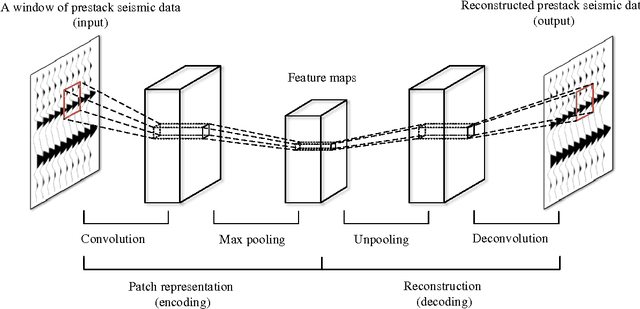


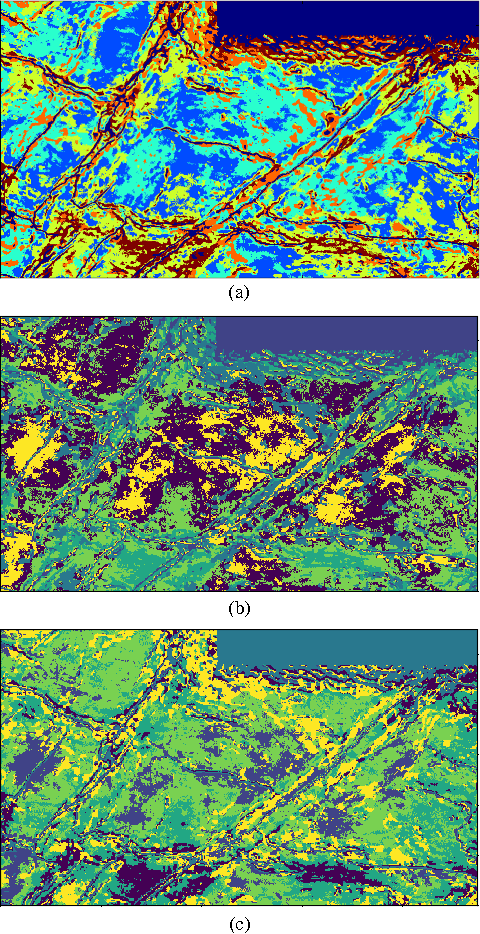
Abstract:Prestack seismic data carries much useful information that can help us find more complex atypical reservoirs. Therefore, we are increasingly inclined to use prestack seismic data for seis- mic facies recognition. However, due to the inclusion of ex- cessive redundancy, effective feature extraction from prestack seismic data becomes critical. In this paper, we consider seis- mic facies recognition based on prestack data as an image clus- tering problem in computer vision (CV) by thinking of each prestack seismic gather as a picture. We propose a convo- lutional autoencoder (CAE) network for deep feature learn- ing from prestack seismic data, which is more effective than principal component analysis (PCA) in redundancy removing and valid information extraction. Then, using conventional classification or clustering techniques (e.g. K-means or self- organizing maps) on the extracted features, we can achieve seismic facies recognition. We applied our method to the prestack data from physical model and LZB region. The re- sult shows that our approach is superior to the conventionals.
3D seismic data denoising using two-dimensional sparse coding scheme
Apr 08, 2017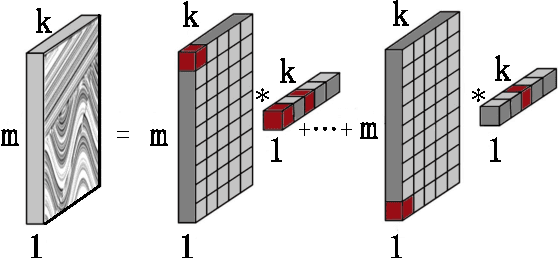

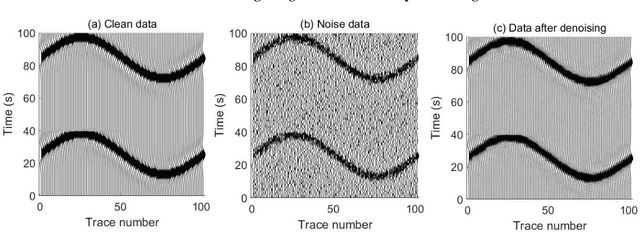
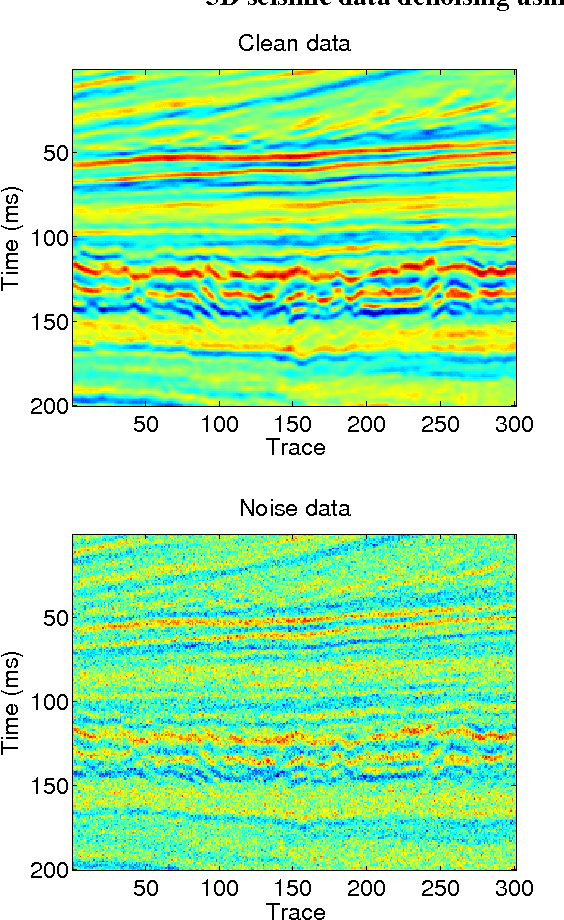
Abstract:Seismic data denoising is vital to geophysical applications and the transform-based function method is one of the most widely used techniques. However, it is challenging to design a suit- able sparse representation to express a transform-based func- tion group due to the complexity of seismic data. In this paper, we apply a seismic data denoising method based on learning- type overcomplete dictionaries which uses two-dimensional sparse coding (2DSC). First, we model the input seismic data and dictionaries as third-order tensors and introduce tensor- linear combinations for data approximation. Second, we ap- ply learning-type overcomplete dictionary, i.e., optimal sparse data representation is achieved through learning and training. Third, we exploit the alternating minimization algorithm to solve the optimization problem of seismic denoising. Finally we evaluate its denoising performance on synthetic seismic data and land data survey. Experiment results show that the two-dimensional sparse coding scheme reduces computational costs and enhances the signal-to-noise ratio.
 Add to Chrome
Add to Chrome Add to Firefox
Add to Firefox Add to Edge
Add to Edge